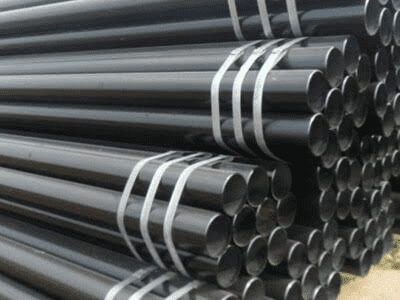
4130 is an alloy steel containing chromium and molybdenum. It is popularly known as Chromoly in the commercial market. Typically, the composition includes 0.8 to 1.1% chromium and 0.15 to 0.25% molybdenum with both functioning as strengthening agents. It is considered low-carbon steel. It is exceptional welding steel, which you can weld by most common methods, and machine it at normalized or tempered conditions.
The exact chemical breakdown of 4130 tubing with its specific tolerances include:
- 28 – 0.33% Carbon
- 15 – 0.25% Molybdenum
- 7 – 0.9% Manganese
- 8 – 1.1% Chromium
- ≤ 0.035% Phosphorus
- 15 – 0.35% Silicon
- ≤ 0.04% Sulphur
Why CR And Mo?
Molybdenum has been long-used as a standard alloying element for producing creep-resistant steel that can withstand temperatures of up to 530 °C. When used in high temperatures, it can coagulate and coarsen carbides. Molybdenum is also known to increase the corrosion resistance of 4130 steel. The metallurgical effects of Mo and its ability to work at higher working temperatures with added strength make it highly valuable.
But, continually increasing Mo content can lead to a decrease in creep ductility. Moreover, graphitization takes place above 500 °C, which can cause a drawback in Mo-based steels. However, combining Molybdenum with Chromium helps to yield a valuable solution. Chromium results in exceptional oxidation enable the steel to resist corrosion effectively. It gives the steel good and uniform hardness penetration. The combined benefits of Cr and Mo make Chromoly useful across a wide range of applications.
Properties of 4130 Steel
- Any known commercial methods can be performed to weld AISI 4130 steel.
- You can heat treatment of AISI 4130 at 871°C (1600°F) and then quench it in oil. 4130 steel can be heat-treated at temperatures that range from 899 to 927°C (1650 to 1700°F).
- Hot-working of AISI 4130 steel is done at 816 to 1093°C (1500 to 2000°F).
- One can forge AISI 4130 steel at 954 to 1204°C (1750 to 2200°F).
- Using conventional methods, 4130 steel can be cold worked.
- You can annealit at 843°C (1550°F), and then subject it to air cooling at 482°C (900°F).
- Based on the desired strength level, the tempering process can be performed at 399 to 566°C (750 to 1050°F).
- Using heat treatment or cold working, you can harden AISI 4130 steel.
Why is it called 4130 Steel?
4130 steel acquires its name from specific rules outlined by the AISI and SAE. The first digit designates the steel’s class and its major alloying component (s). The second digit indicated the relative percentage of the given alloying element and any other critical secondary elements within the alloy. The last two numbers identify the carbon concentration in 0.01% increments. 4130 chromium-molybdenum steel is part of the 4xxx and 41xx series.
Uses of Chromoly
In 4130 stainless steel, the added tensile strength and extra corrosion resistance make it suitable for use in an environment with elevated temperature levels. Hence, it is ideal for equipment that operates under high temperatures. It is widely used in automotive, bicycle, and heavy equipment parts. Various industries such as the oil and gas industry, metal production and forming equipment, and others use it to optimize strength and durability. It is also used in manufacturing molds, pins, bicycle tubing, furnace equipment, crankshafts, chain links, drill collars, machine shafts, conveyors, tie rods, and miscellaneous tooling.
To Conclude:
These are a few essential properties, compositions, and applications of 4130 steel. The alloy is suitable for high pressure and temperature use and hence is a material of choice for various applications.
